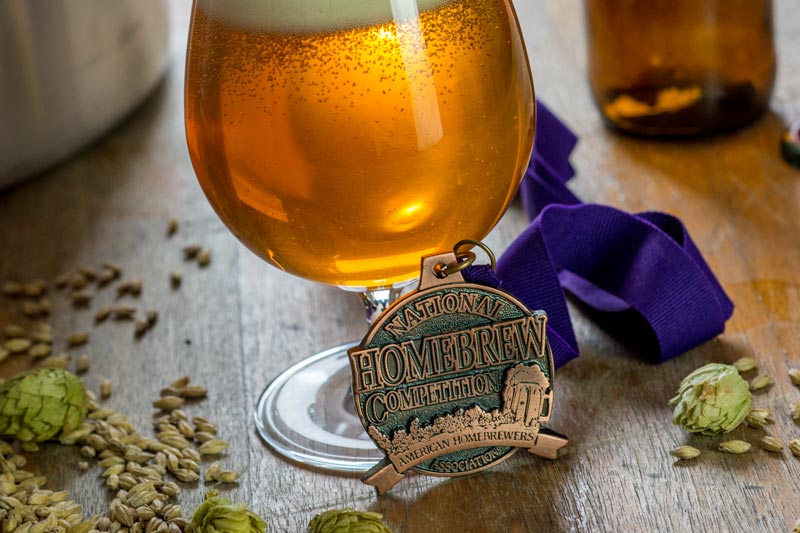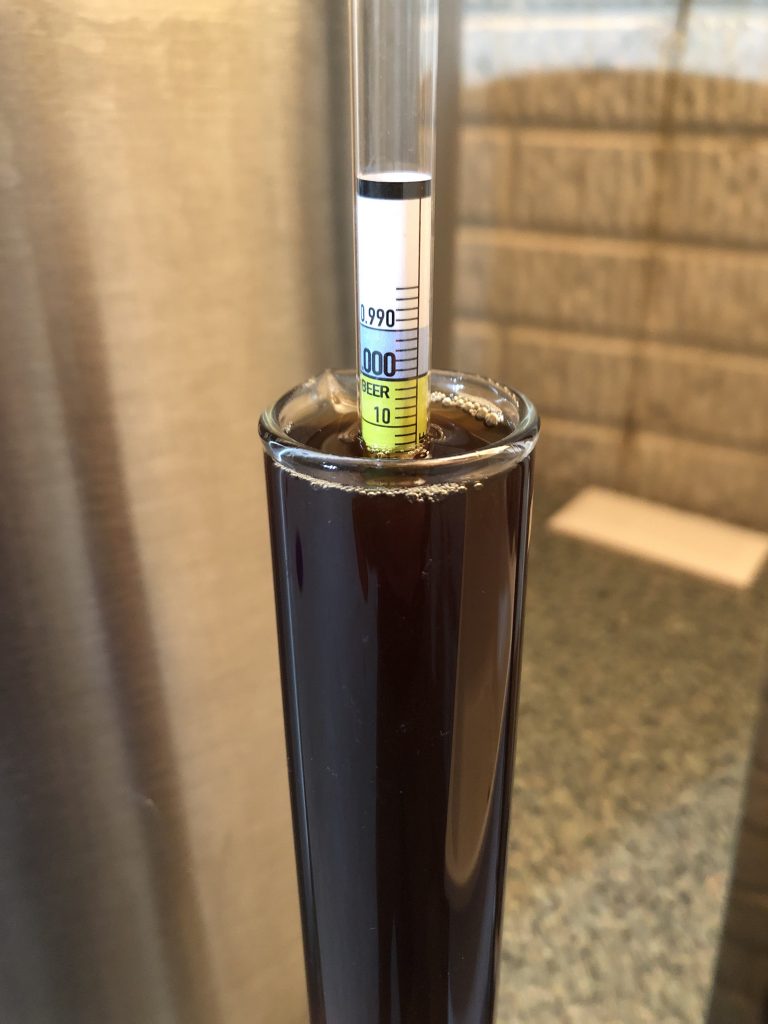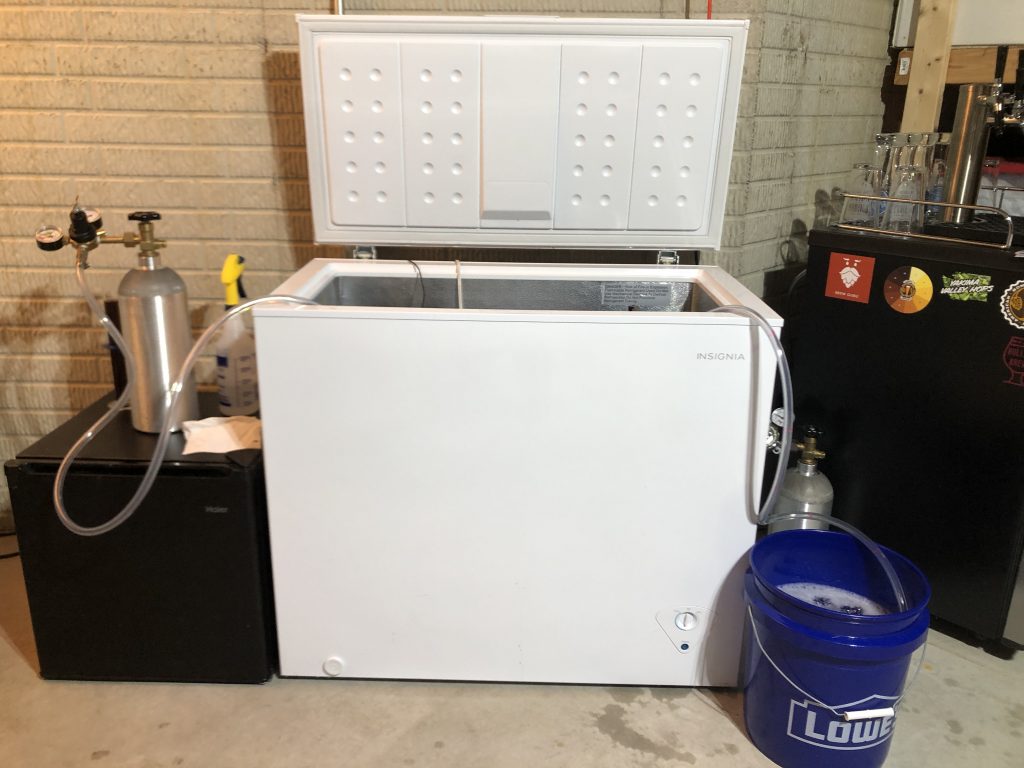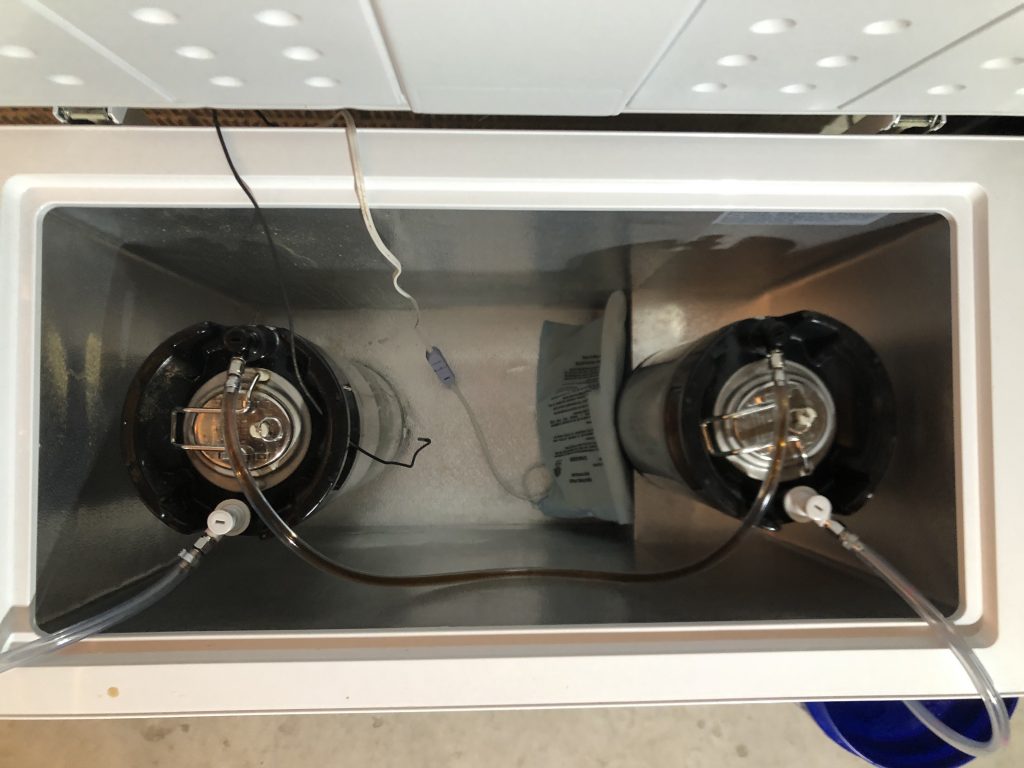Well I finally did it.
After almost 3 years of homebrewing, I entered my first homebrew competition. Not just any competition mind you, but “the competition”. The 2021 National Homebrew Competition.
I thought I’d do something a little different here, and chronicle my entry in the 2021 National Homebrew Competition. Think of it as a delayed live blogging event. I’ll walk you through the different phases leading up to the competition, as well as the overall result. All in real-time, or somewhat delayed real-time.

2021 National Homebrew Competition Entry
It all started with an email, announcing registration would be opening in a few weeks.
I had brewed a Schwarzbier right after Christmas 2020, and was quite happy with the results. It just so happened I was sharing this with a buddy, and he really liked the beer. That evening, thinking back to the email from the American Homebrewers Association, got me thinking about entering that beer into the competition.
And here we are…
The Entry (Early Feb)
Registration opened on Wed. Feb. 17th, and I submitted my entry for the 2021 National Homebrew Competition on Fri. Feb. 19th.
The registration process was pretty straight forward, and I had to submit the style of beer I would be submitting along with the beer’s name.
This was the moment of truth. Was I going with the Schwarzbier, or would I try something else? I was a little hesitant going with the Schwarzbier, since my previous batch was the first Schwarzbier I ever brewed.
I opted to go with the Schwarzbier for one primary reason. There were a few things I wanted to improve on, and I thought this would be an ideal opportunity to build on something I just brewed.
Now what about the name?
The Schwarzbier I brewed was called; “May The Schwarzbier With You”. While I dig the name, I can’t take credit for it, as there seems to be a number of those floating out on various sites.
The recipe I used was unique, and not a copy of an existing recipe. I did use a few recipes for inspiration, and ended up with something between this and this.
In the end, I liked the name of the beer used in one of those recipes. So I went with that.
Given this recipe was going to be new and improved, and my second version of the recipe, the name I submitted for the entry was; “May The Schwarzbier With You Deux”.
Recipe Formulation (Mid Feb)
Since I had my base recipe to work with, and I had been drinking it for a few weeks, I knew the things I wanted to improve upon.
In the original version, I wanted the dryness and crispness of a lager. Given that, the bulk of the grain bill (78%) was made up of Pilsner malt. I thought the roasty character was spot on, but could have used a touch more caramel taste.
While the beer was tasty, it needed some additional nuttiness, something a little more.
For my 2021 National Homebrew Competition entry, I opted to increase the Munich malt by 3x the amount I previously used. This got me to just over 30% of the grain bill, which was offset by a reduction in the Pilsner malt. The only other change to the grain bill was to the Crystal 40, which I increased from 2.9% to 3.4%.
My hop additions stayed pretty close to the original recipe. I did however bump the overall IBU’s just slightly from 28 to 30, to compensate a bit for the additional Munich malt.
May The Schwarzbier With You Deux
Recipe Details
| Batch Size | Boil Time | IBU | SRM | Est. OG | Est. FG | ABV |
|---|---|---|---|---|---|---|
| 3.2 gal | 60 min | 30.1 IBUs | 24.1049712 | 1.048 | 1.012 | 4.7 % |
| Actuals | 1.048 | 1.012 | 4.7 % | |||
Fermentables
| Name | Amount | % |
|---|---|---|
| Pilsner Malt (Avangard) | 3.625 lbs | 56.91 |
| Munich II (Weyermann) | 2 lbs | 31.4 |
| Carafa II (Weyermann) | 5.52 oz | 5.42 |
| Caramel/Crystal Malt - 40L | 3.44 oz | 3.38 |
| Chocolate (Briess) | 2.96 oz | 2.9 |
Hops
| Name | Amount | Time | Use | Form | Alpha % |
|---|---|---|---|---|---|
| Hallertauer Mittelfrueh | 1.15 oz | 60 min | Boil | Pellet | 4.2 |
| Hallertauer Mittelfrueh | 0.4 oz | 20 min | Boil | Pellet | 4.2 |
| Hallertauer Mittelfrueh | 0.4 oz | 0 min | Boil | Pellet | 4.2 |
Yeast
| Name | Lab | Attenuation | Temperature |
|---|---|---|---|
| Saflager Lager (W-34/70) | DCL/Fermentis | 75% | 48°F - 59°F |
Notes
| Water Profile Ca 22 | Mg 8 | Na 5 | SO4 31 | Cl 39 | Bc 12 |
Brew Day (Feb 21st)
I was hoping to brew this beer a week or two prior, to give some additional lagering time, but life got in the way.
In any case, the brew day went off as planned. I’ll spare all the details, but here’s a few highlights on the process.
I was able to chill the wort to about 72 degrees Fahrenheit before racking to my Corny keg fermenter. After sealing things up, it went in my fermentation chamber to finish cooling.
Two packets of SafLager W-34/70, properly hydrated, were pitched into 52 degree Fahrenheit wort. I bumped my temp control on the chamber to 54 degrees to start the fermentation process.
I used my normal process to purge my 3 gallon serving keg, using the CO2 generated during fermentation.
On day 5, I started ramping up the temperature by two degrees/day until it hit 60 degrees. After 3 days, I slowly lowered the temps back to the original 54 degrees.
After another 5 days, I began slowly lowering the temperature to the mid-30’s for a quick 2 day cold crash.
And that’s where we are at today, March 7th, 14 days in the fermenter and counting.
Packaging (Mar 10th)
After 17 full days in the fermenter, it was time to package.
I keg all my beers, so this 3.25 gallon batch went into my 3 gallon corny keg. Based upon my calculations, I’ll be able to let this lager in the keg and on gas for 24 days before bottling for the competition.
My packaging operation is pretty straight forward. I already had my serving keg sanitized and purged as described above, so it was ready to go.
Ah, almost forgot. Needed to do a quick gravity reading. I simply hook up a picnic tap to my fermenter, and fill my hydrometer tube to take a gravity reading. Spot on to my expected gravity reading of 1.012 (temp corrected), which will leave me with a 4.8% ABV beer.

Of course you need to taste the beer sample right? You can’t really tell from the picture, but the beer did clear up nicely. The taste was as to be expected. Seemed to be the perfect amount of roast flavor, and had lost a bit of the dry crispness of a lager which is what I was going for.
For filling the keg, it’s simply a matter of connecting a jumper line from the out post on the fermenter to the out post on the serving keg. I also run a line from the in post on the serving keg to my bucket of sanitizer to let the pressure equalize as I’m filling. Hit the fermenter with about 3 – 4 psi of gas, and let the serving keg fill.
After about 20 min, I placed the filled keg in my kegerator and connected the gas line. While I’m not in a hurry to carb this batch up, I’ll burst carb to ensure it’s fully carbonated before I bottle.
Bottling and Shipping (Mar 28th)
After 18 days of lagering on gas, it was time to bottle and prepare for shipping.
I’ve been dreading this day, as I am not a fan of bottling. To help simplify matters, I purchased a few new gadgets.
The first was the TapCooler Counter Pressure Bottle Filler, and the second was a newer bottle capper. I may have to do a separate write up on the TapCooler, as it didn’t go quite as smoothly as I had hoped. I learned a few things along the way, and will have to give it another shot given this experience.
On a positive note, capping the bottles went without a hitch, given my new bottle capper. This was actually the process I was dreading the most. Previous experience resulted in a number of cracked bottles, and I wasn’t really sure what to expect. Suffice to say, I was using a very cheap capper previously, and this new one made life much easier.
I ended up filling a few extra bottles, which I intend to open at the same time judging is scheduled to begin (week of Apr 26th). I figured this was a good way to sample the same beers that are going to be judged. Let’s just hope they stay carbonated.
After filling 8 bottles, it was time to package up my 2021 National Homebrew Competition entry for shipping.
I ended up purchasing some boxes from The Spirited Shipper, which also included their beer inserts. These inserts made the packaging process a breeze, as there wasn’t a need to deal with any other packaging materials (e.g./packing peanuts).
Hopefully, nothing breaks in transit.
Finally, I weighed and measured the package, and printed off a label using UPS. To avoid the whole hassle of being interrogated at The UPS Store, I elected to have the package picked up from my residence.
While I have pulled a few samples from my keg, I’ll hold off on doing my own review until the time the judging starts. I will say, this batch was definitely an improvement over my first Schwarzbier. I really liked this beer.
Edit: In early April received confirmation that the shipment was received. Follow up email from the National Homebrew Competition seems to confirm that as it stated; “if you’re receiving this email, rest assured we have your entries”.
That email also stated I will receive two comment sheets from two different judges, which will be emailed after the awards ceremony on June 19th.
Next up, my own tasting review.
Credits
Medal and Beer Image: American Homebrews Association
Cheers…


Your targeted account of coming into the 2021 National Homebrew Competition is honestly inspiring! The step-by-step chronicle of brewing “May the Schwarzbier With You Deux” is informative and engaging. Your passion for brewing shines through each phase, from recipe formula to packaging. This put-up is an excellent and useful resource for aspiring homebrewers. Cheers to your brewing trip and great success in the competition!